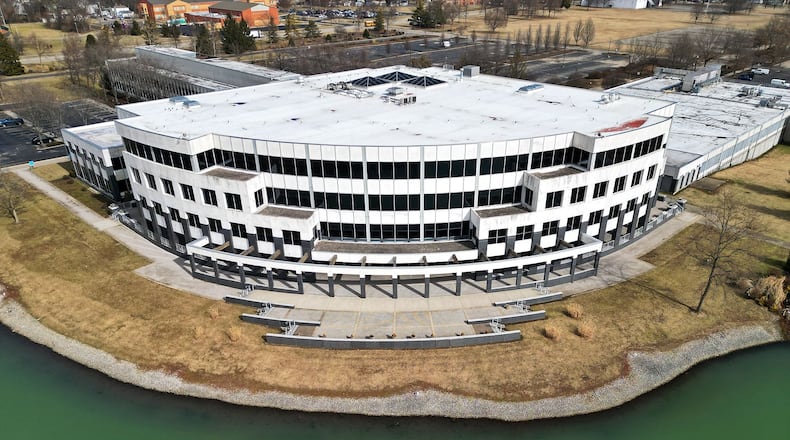The commissioners have already given $10 million to the project and recently pledged $5 million more as part of the required local match for an Ohio Department of Development Innovation Hubs grant application to renovate the technology center.
The commissioners also gave $5 million worth of American Rescue Plan Act money to Miami for the College@Elm Innovation & Workforce Development Center. That makes a total of $20 million for Miami projects.
Commissioners Cindy Carpenter and Don Dixon recently agreed to use $4 million in ARPA money and $1 million from the general fund for the project. Dixon said from the beginning when Butler Tech pitched the commissioners for ARPA funds for advanced technology learning centers that he wanted the vocational school and the university to collaborate. The end result he said is “a dynamo that’s something I’m just in awe of.”
“This program is unheard of anywhere else, with Miami opening up their doors and the vocational school opening up their doors and doing a combined curriculum standard that makes a pathway, was a vision that I felt I could support with this amount of money,” he said. “This is the most amount of money that I can ever remember the county stepping up and saying look this is the future.... this is a game changer.”
Carpenter agreed this is the most money “ever” awarded by the county to an outside project. She said from the very beginning of the process to award ARPA funds that the Butler Tech projects were “the most crucial projects” of all the submissions.
County Administrator Judi Boyko said the commissioners to-date have obligated $69.4 million and $7.1 million is unencumbered. The commissioners must obligate all of the funds by year’s end. They received $74.4 million and the funds earned $2.1 million in interest.
In a letter seeking the commissioner’s support, Randi Thomas, vice president for the university’s Advancing Strategy, Partnerships, Institutional Relations, & Economy program, described the project.
“The Hub employs a horizontal engagement model infusing industry experts, workforce trainers, educators, researchers, and entrepreneurs all collaborating together. This horizontal engagement moves beyond co-location to integration,” Thomas wrote. “What traditionally would be separate adult workforce training, high school student education, college student education, research, and commercialization endeavors are merged together such that a visitor cannot distinguish an adult learner from a Butler Tech student or a Miami student.”
Thomas wrote the $5 million county contribution will allow them to seek the maximum grant award of $35 million. Boyko said she was told Butler Tech and Miami are also putting in $5 million in matching money. The state’s development department website notes there is up to $125 million available and rules require a “minimum cost share commitment of one dollar for every three dollars of state funds requested is required.”
Mason Waldvogel, deputy chief of media relations for the state development department, said the Innovation Hub program is new and only one grant has been awarded so far, $31.3 million for the new Northwest Ohio Glass Innovation Hub in Toledo. According to the state website, “Innovation Hubs combine the talents of leading academic and research institutions, workforce and economic development partners, and private companies to gain a competitive advantage through collaboration.”
Waldvogel said Wednesday the state hadn’t received Miami’s application yet, but there are 10 grants currently under consideration and they are awarded on a “rolling basis.” All told, including the Toledo hub they have received requests totaling $296.7 million.
The Miami University administration could not be reached for comment about questions on how the money will be spent and what will happen if they do not receive the grant.
Thomas in his letter estimated the new technology hub will bring in $478 million in new payroll which will boost the city’s earnings tax revenue. Plus, “We also project the creation of 10,376 new jobs and $47,000,000 in research and commercialization. Currently, 60 collaborators have signed onto assist the Hub in serving the talent, research, and commercialization needs of Butler County’s 393 manufacturers and the 24,118 individuals they employ.”
Butler Tech Superintendent/CEO Jon Graft told the Journal-News this is a ground-breaking concept.
“The commissioners saw the vision that Butler Tech put forth and have truly embraced it and our business partners have embraced it, Miami is all in,” Graft said. “It is really and truly a cohabitated space. We’re going to have equipment, our teaching staff, our students with the undergraduate students, with the graduate students, with the PhD students all in the same classrooms. All in the same labs working cohesively together. It is a change in the way education is being delivered.”
Ande Durojaiye, vice president and dean of Miami University Regionals, told the commissioners the Hub is drawing a lot of attention and Ohio’s manufacturing economy is growing and “one of the best in nation” the Hub will be “at the center of that.”
“We’ve had individuals come from the state level but even at the federal level to see what we’re doing, so, so exciting because of the energy, the excitement, the opportunity around this partnership,” Durojaiye said.
About the Author
